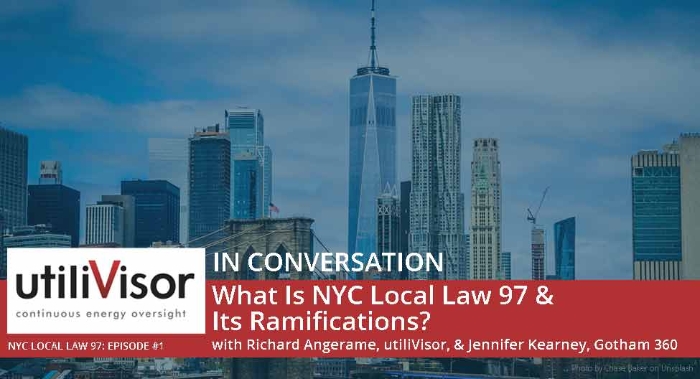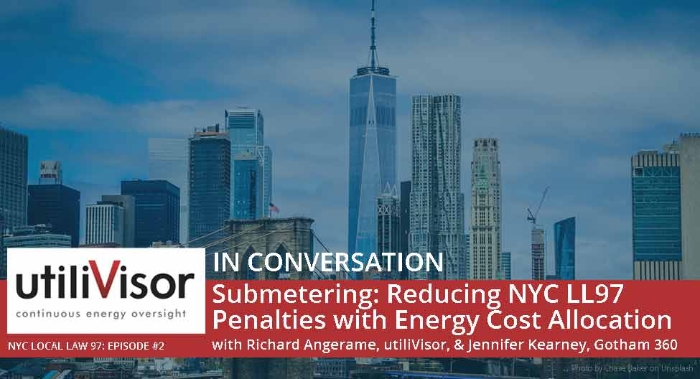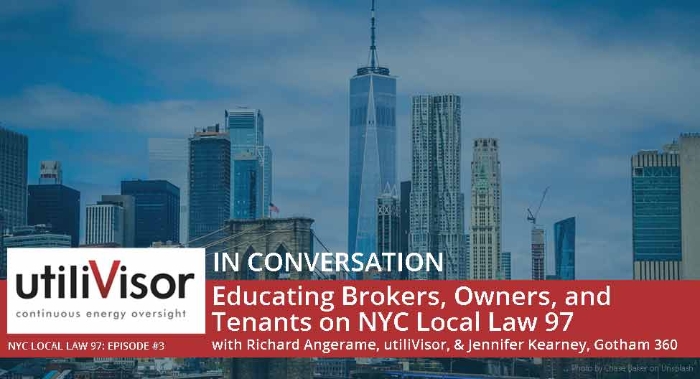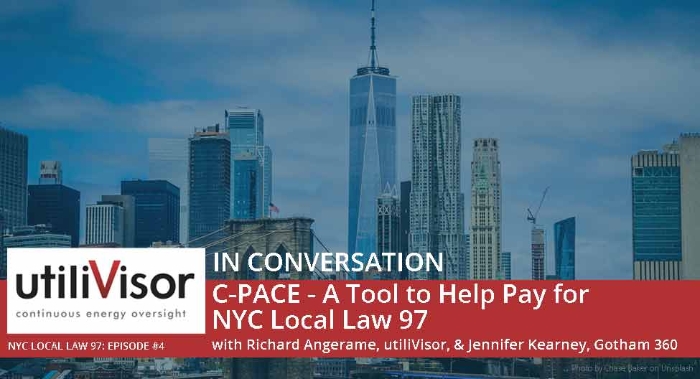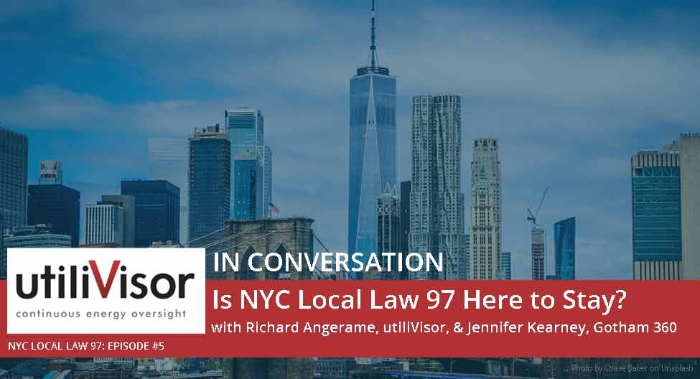New York City Real Estate Owners and Tenants: Is Your Lease LL97 Ready?
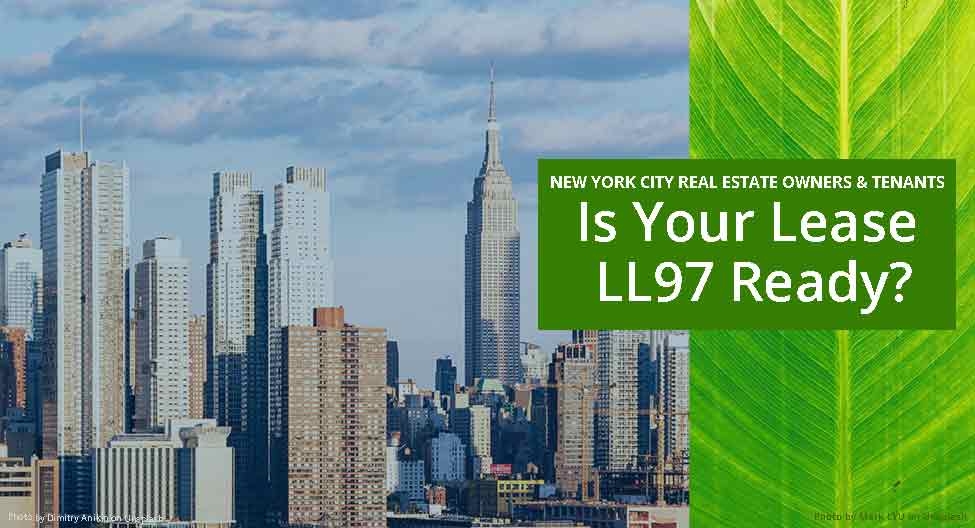
Whether they know it or not, New York City building owners and tenants are staring Local Law 97 (LL97) straight down the barrel. Fines for violating the law begin in 2024, so the time to begin compliance planning is now. Here’s what you need to know to avoid penalties and ease your transition into what the city council itself calls one of the world’s most ambitious climate initiatives.
What Is LL97?
Passed in 2019, LL97 sets limits on building carbon emissions as part of the city’s commitment to the Paris climate accords. Buildings are the city’s largest contributor to greenhouse gas (“GHG”) emissions, producing 34.4 million tons of carbon dioxide equivalent in 2016, or 66% of the city’s total GHG emissions. The goal of the law is to reduce building emissions 40% by 2030 and reduce citywide emissions 80% by 2050 by encouraging conservation and energy efficiency through annual penalties on properties that exceed these limits.
Who Does This Law Apply To?
According to the Urban Green Council, properties that are subject to the NYC Benchmarking Law are also subject to LL97. The law itself defines covered buildings as:
- Buildings that exceed 25,000 gross square feet
- Two or more buildings on the same tax lot that together exceed 50,000 square feet
- Two or more buildings owned by a condo association that are governed by the same board of managers and that together exceed 50,000 square feet
Exceptions to covered buildings are listed on NYC’s GHG reporting page.
How Does It Work?
Building emissions, of course, are difficult to measure. Instead of measuring what’s going out, the law focuses on the energy that’s coming into the building in order to supply its heat, cooling, light, and power. LL97 establishes a building’s carbon footprint based on its Scope 1 (onsite combustion) and Scope 2 (purchased energy, such as electricity or steam) emissions. These totals are converted by energy type into their carbon equivalent (or “CO2e”).
Because the use of emission caps is so new, the law established two different sets of caps to help with the transition. The first set applies from 2024 to 2029 and is designed to only penalize the worst performers. In 2030, however, the limits become significantly more stringent and are likely to affect about 80% of covered buildings.
The actual cap values also vary by building type. Spaces dedicated to residential or other lower-energy use have higher caps, and spaces with high-energy use, such as data centers and consumption-heavy industrial or research facilities, have lower caps. Buildings with tighter limits will more easily exceed those caps and therefore are likely to pay more in penalties.
How Will Buildings Be Assessed?
Not all the details are in, but this is what we know. Starting May 1, 2025, and continuing annually, all building owners must file a certified report with the Office of Building Energy and Emissions Performance (OBEEP) on their building’s emissions intensity. Buildings that have exceeded their emissions cap will be assessed a penalty of $268 per metric ton CO2e (“mtCO2e”). Additional fines will be levied for failing to submit an annual report or for submitting a false report.
To illustrate how this plays out, let’s work through a simple example. Say you own a 30,000-square-foot research laboratory (classified as Group B–Nonproduction Laboratory) that produces 650 mtCO2e of emissions per year. For the sake of this example, let’s say you plan to make no changes that would remediate those emissions. Given your square footage, your emissions cap will initially start at 714.3 mtCO2e in 2025, so your space starts out below its emissions limit and is not subject to penalties. But when the caps change in 2030, your limit drops by almost half to 399.0 mtCO2e. At that point, your 650 mtCO2e puts you well over the limit, causing you to be fined $67,268 annually until the building comes into compliance.
Granular Understanding of Usage Will Be Key
Simple examples are helpful, but the reality is that buildings in New York are never single-purpose. The city is full of mixed-use properties, such as retail-hotel-residential, buildings with varied commercial purposes, and campuses of connected buildings with multiple uses. This fact raises the penalty stakes for owners. Buildings (or campuses) that are submetered by occupancy type will be assessed according to the emissions cap for that type and its associated square footage.
In contrast, buildings without submetering will have their entire square footage cost-averaged to the tightest emissions cap. Because the entire building is assessed at a lower limit, the building will exceed that low limit more quickly and therefore pay a higher penalty than it would if each space’s energy usage was delineated and subject only to the cap of its occupancy type.
Owner Recommendations
- Audit your building by occupancy type for energy consumption as soon as possible. Areas to pay attention to include heating, cooling, lighting, and plug loads.
- If you’re not already submetering your spaces, now is the time to start. Formerly considered a “nice to have,” submetering will be essential to meeting the city’s emissions limits and avoiding large penalties.
- Incentivize key tenants first. Rather than tackling energy usage issues with every tenant, begin by targeting the 5% of tenants who lease 40% of the space and any additional tenants who are running energy-intensive operations. This practice will maximize your results while minimizing your time spend.
- Buy carbon offsets to help minimize penalties during your transition.* Offsets are fairly inexpensive and readily available. Be aware, however, that the law limits offsets to 10% of a building’s annual emissions, so offsets are not a complete solution.
- Make use of C-PACE. The Commercial Property Assessed Clean Energy financing program provides low-cost financing for commercial and multifamily buildings to fund energy efficiency and renewable energy projects assessed through the property tax mechanism.
*Renewable energy certificates (RECs) are also listed in LL97 as a penalty-mitigation option. However, the law requires local RECs (specific to zone J), which are currently hard to come by. The state may make more RECs available in the future, but for now these are as rare as finding a rent-controlled 2-bedroom apartment for under $2000.
How Does LL97 Affect Tenants?
Local Law 97 places the burden of compliance solely on owners of covered buildings. That does not mean, however, that tenants are spared from having to consider their energy usage. Property owners will be paying close attention to tenant activities that are likely to drive them over their emissions limits and demand those tenants pay the majority of the fines. Building owners with significant Local Law 97 penalties may increase rent or include “green lease” provisions in an effort to share financial obligations with their tenants as a way to manage the financial burden. If you want to pay for only the amount of energy you consume (and therefore only your share of emissions), here’s what you should be doing now:
Tenant Recommendations
- Ask for submetering so that you know what your usage is, and consider adding provisions to your lease that ensure you are not paying penalties on your neighbor’s excessive use.
- Audit your activities and energy usage patterns and implement new routines to make sure you are not using extra lights, electricity, or thermal energy when you don’t need to. Figuring out these patterns now will save you $$$ and help you reach your corporate sustainability goals.
- When looking for space, hire consultants who encourage brokers and owners to talk about energy load and responsibility for penalties, and fire those who don’t. The leases and negotiating goals of the past, such as flat rates for energy use, will not serve you well in the future. Tomorrow’s leases need consultants and brokers who speak a new lease language.
- Advertise your company’s energy initiatives to your prospects and customers. Studies published in Entrepreneur, Forbes and the Harvard Business Review show that consumers want to support sustainable initiatives and prefer to support eco-friendly companies. Products marketed as sustainable grew 5.6 times faster than their non-sustainable competition and showed higher profitability compared with their non-green alternatives.
Why You Shouldn’t Wait
Although the default response to any major new law is often to wait and see how it all shakes out, LL97’s emissions limits are here to stay. That means that delaying compliance activities and retrofits is a dangerous and potentially costly game. The sooner you understand where energy is being wasted and start implementing more-efficient practices, the lower your costs are likely to be.
To learn more, listen to this discussion between Richard Angerame, submetering expert, and Jennifer Kearney, energy procurement consultant, about strategies and tactics that you can use to surmount the obstacles of LL97.
utiliVisor In Conversation: NYC Local Law 97 (LL97) Audio Series
If you’d like to talk to an expert on submetering and how to delineate your tenants’ energy usage, contact us at 212-260-4800 or fill out our request form.
About utiliVisor
Your tenant submetering and energy plant optimization services are an essential part of your operation. You deserve personalized energy insights from a team that knows buildings from the inside out, applies IoT technology and is energized by providing you with accurate data and energy optimization insights. When you need experience, expertise, and service, you need utiliVisor on your side, delivering consistent energy and cost-saving strategies to you. What more can our 40 years of experience and historical data do for you? Call utiliVisor at 212-260-4800 or visit utilivisor.com

